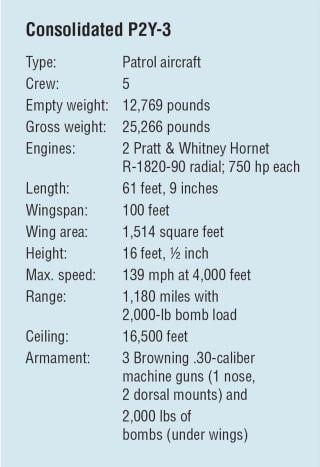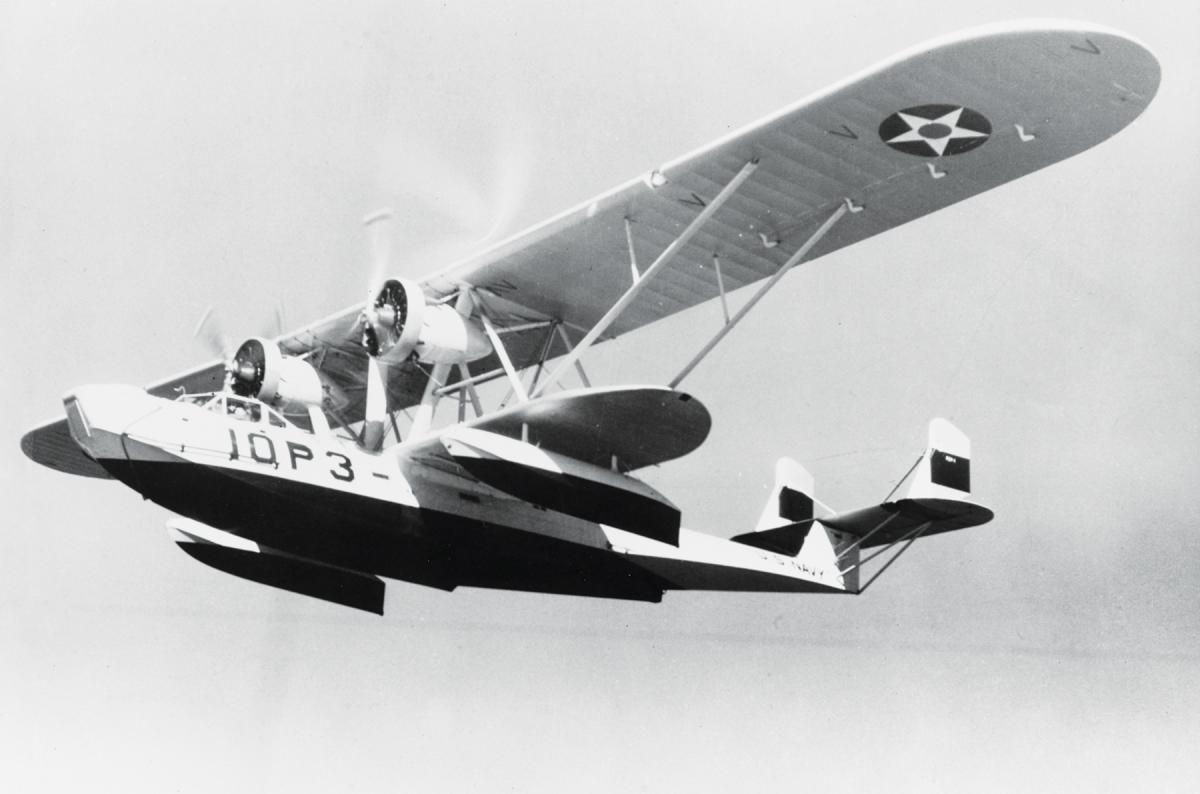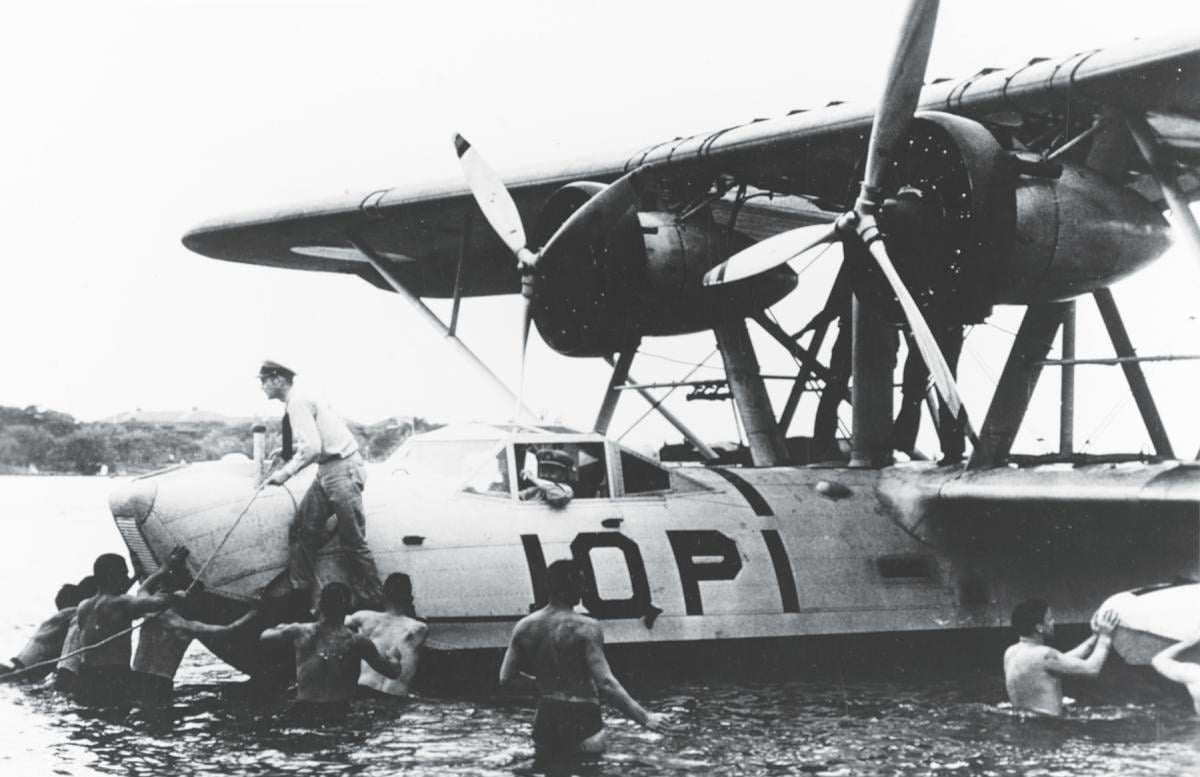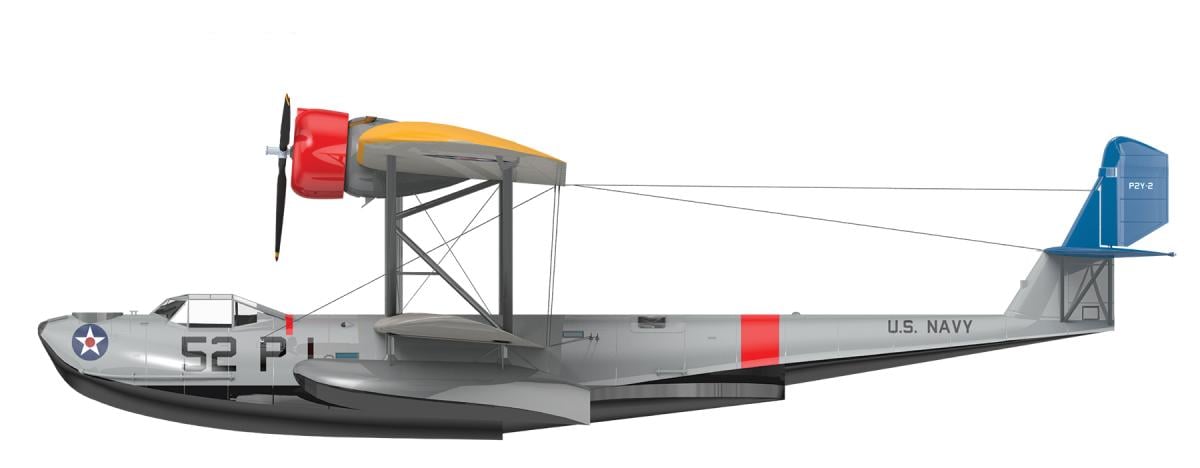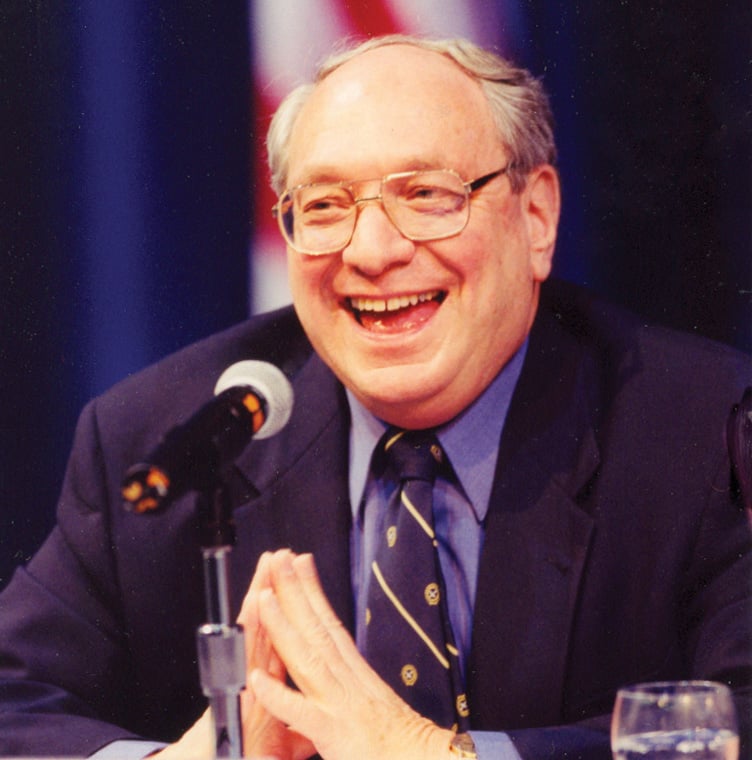In many respects the progenitor of the military flying boats of the 1940s and beyond was the Consolidated P2Y.1 After World War I, several U.S. aircraft companies produced flying boats, some based on the PN aircraft, which itself had been developed from the F-5L flying boat.
Several PNs were produced by the Naval Aircraft Factory in Philadelphia. Subsequently, in early 1928 the Bureau of Aeronautics awarded a contract to the Consolidated Aircraft Company for a prototype monoplane flying boat, the XPY-1, unofficially called “Admiral.” However, the production contract went to the Glenn L. Martin Company, which built the aircraft as the P3M. Then the Navy in 1931 gave a contract to Consolidated for another prototype; this aircraft was designated XP2Y-1 and called “Ranger” by Consolidated.2
The Ranger had a 100-foot parasol wing, as had its predecessor, but it was a sesquiplane with a smaller wing mounted lower, at the top of the fuselage; the lower wing measured 45 feet, 3 inches. The wings were fabric-covered, with internal fuel tanks. Stabilizing floats were fitted to the lower wing. Twin radial engines were fitted below the upper wing, with a third engine mounted on struts above the main wing. Enclosed cabins were provided in the aluminum fuselage. The tail had twin vertical stabilizers and rudders fitted to the horizontal surface.
The prototype XP2Y-1 flew for the first time on 26 March 1932, from the Consolidated plant in Buffalo, New York. Its third, above-wing engine was removed after the initial flight test.
Flight tests were continued at the naval air station in Anacostia, Washington, D.C. Significantly, in July 1931, the Navy already had ordered 23 P2Y-1 flying boats from Consolidated. The production models were twin-engine aircraft, the above-wing third engine having been discarded. These aircraft were delivered from December 1932 to June 1933 and went to Patrol Squadron (VP) 5F at Coco Solo in the Panama Canal Zone and VP-10F at Anacostia.
Six of these P2Y-1s set a nonstop formation distance record on 7–8 September 1933, flying 2,058 miles in 25 hours, 19 minutes, from Norfolk, Virginia, to Coco Solo. Then, on 10–11 January 1934, another six P2Y-1s flew from Alameda, California, to Pearl Harbor, a distance of 2,408 miles, in 24 hours, 56 minutes. President Franklin D. Roosevelt sent a telegram of congratulations, citing the flight as “the greatest undertaking of its kind in the history of aviation.”
After the modification of one P2Y-1 to the XP2Y-2, the Navy ordered another 23 production aircraft as P2Y-3s. In these flying boats the more powerful twin radial engines were fitted to the leading edge of the upper wing. This change in engine position reduced drag. Additional fuel tanks also were provided. At least 21 of the P2Y-1 models ultimately were provided with repositioned engines, becoming P2Y-2s.
Additional aircraft of this type were built for export: The P2Y-1C was delivered to Colombia in 1932 and remained in service until 1948; the Colombian Air Force used the plane in the conflict with Peru in 1932–33. The P2Y-1J reached Japan in 1935. The Japanese model was assembled by Kawanishi and flown in evaluation tests; it saw service as a transport during World War II. Argentina ordered six P2Y-3A variants that were delivered in 1937; they served until replaced by Consolidated PBY Catalinas in 1947.
The P2Ys flew in several U.S. Navy patrol squadrons, with the last plane being withdrawn from service by the end of 1941. While the P2Y had a relatively brief career and did not fly with U.S. Navy markings in World War II, the graceful flying boat provided invaluable service and experience in the 1930s and, in many respects, was the precursor of the PBY Catalina. That later aircraft retained the general hull design of the P2Y and, initially at least, several other P2Y features.
The Catalina—with the designations PBY, PB2B, PBN, PBV, and OA-10—was produced in greater numbers than any other flying boat and served in the air services of 15 nations plus several commercial airlines. It made invaluable contributions to Allied operations in World War II.
1. See Gordon Swanborough and Peter M. Bowers, United States Navy Aircraft since 1911 (Annapolis, MD: Naval Institute Press, 1968), 93–94; and John Wegg, General Dynamics Aircraft and Their Predecessors (Annapolis, MD: Naval Institute Press, 1990), 65–67. The latter volume is the more complete.
2. Consolidated, formed in 1923, became Consolidated Vultee in 1943 by a merger of the two firms and was acquired by General Dynamics in 1953–54.




